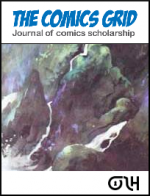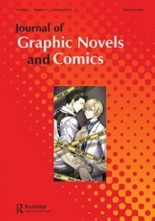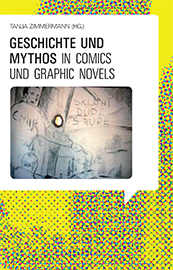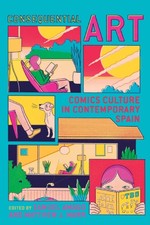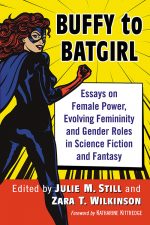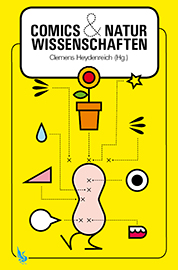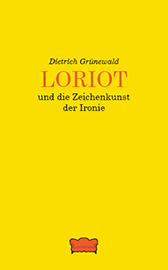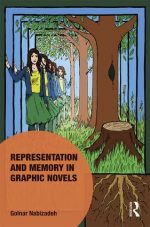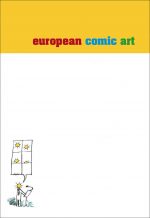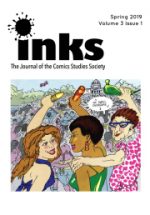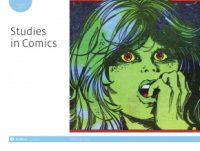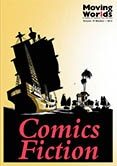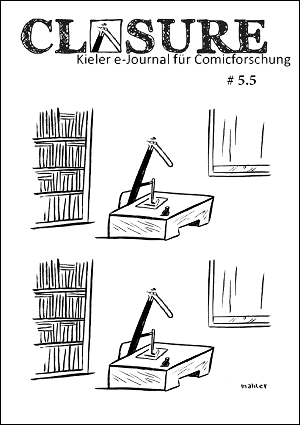Der Zeitschriftenmonitor ist eine Unterkategorie des Monitors. Hier werden in unregelmäßigen Abständen kürzlich erschienene Ausgaben und Artikel internationaler Zeitschriften zur Comicforschung sowie Sonderhefte mit einschlägigem Themenschwerpunkt vorgestellt. Die Ankündigungstexte und/oder Inhaltsverzeichnisse stammen von den jeweiligen Websites.
Haben Sie Anregungen oder Hinweise auf Neuerscheinungen, die übersehen worden sind und hier erwähnt werden sollten? Das Team freut sich über eine Mail an redaktion@comicgesellschaft.de.
→ Zu früheren Monitoren
The Comics Grid – Journal of Comics Scholarship
online (open access)
Website
-
- Tony Pickering: Diabetes Year One. Drawing my Pathography: Comics, Poetry and the Medical Self
- Robert J. Hagan: Touch Me/Don’t Touch Me: Representations of Female Archetypes in Ann Nocenti’s Daredevil
- Leah Misemer: A Historical Approach to Webcomics: Digital Authorship in the Early 2000s
- Xiyuan Tan: Guoxue Comics: Visualising Philosophical Concepts and Cultural Values through Sequential Narratives
- Hailey J. Austin: “That Old Black Magic”: Noir and Music in Juan Díaz Canales and Juanjo Guarnido’s Blacksad
- Lisa Kottas, Martin Schwarzenbacher: The Comic at the Crossroads: The Semiotics of ‘Voodoo Storytelling’ in The Hole: Consumer Culture Vol. 1
- Nick Dodds: The Practice of Authentication: Adapting Pilgrimage from Nenthead into a Graphic Memoir
- Ilan Manouach: Peanuts minus Schulz: Distributed Labor as a Compositional Practice
Inks 3.2 (Summer 2019)
online (im Abonnement)
Website
-
- Martha Kuhlman: The Avant-Garde Aesthetic of Vojtěch Mašek
- Mike Borkent: Anarchist Fantasies: A Cognitive Analysis of Fantasy to Promote Anarchism and Cultural Reformulation in Therefore Repent! A Post-Rapture Graphic Novel
- Sean Guynes: Worlds Will Live, Worlds Will Die: Crisis on Infinite Earths and the Anxieties and Calamities of the Comic-Book Event
- Paul Williams: The Greatest Team-Up Never Told? Paul Buhle Theorizes the New Left and Underground Comix
- Paul Buhle: Komix Kountermedia (1969)
- Jeffery Klaehn: „The History and Appreciation of an Art Form“: Talking Comics Studies with M. Thomas Inge
Journal of Graphic Novels and Comics
online (im Abonnement)
Website
-
- Carla Calargé & Alexandra Gueydan-Turek: Unreading Beirut in the age of disaster capitalism: Jorj Abou Mhaya’s Madinah Mujawirah lil Ard
- Larisa Nadya Sembaliuk Cheladyn: Forgotten immigrant voices: the early Ukrainian Canadian comics of Jacob Maydanyk
- Yaakova Sacerdoti: An allegorical-ideological trinity: the beast is dead — the second World War among the animals (1944)
- Sathyaraj Venkatesan & Anu Mary Peter: On comics and the chronicles of emaciation: an interview with Katie green
- Matt Reingold: Autotransmogrification in Asaf Hanuka’s ‘The Realist’ as critique on Israeli society
- Noha F. Abdelmotagally: Veillance in Verax and Āyālw (Ialu): Two countries, one concern
- Peter Stanković: Corto Maltese and the process of endless semiosis
- Rebecca Scherr: Regarding the ruins: ruins and humanitarian witnessing in Satrapi and Sacco
- Sathyaraj Venkatesan & Anu Mary Peter: Anorexia through creative metaphors: women pathographers and graphic medicine
- Ahmed Abdel-Raheem: The multimodal recycling machine: toward a cognitive-pragmatic theory of the text/image production
- Elizabeth Nijdam: Transnational girlhood and the politics of style in German Manga
- Philip Smith: ‘Getting Arno’: the New Yorker cartoon caption competition
- Christopher Smith: Becoming illegible: the repatriation of Japanese fan culture in Genshiken
- Sathyaraj Venkatesan & Sweetha Saji: Graphic illness memoirs as counter-discourse
- Patrick L. Smith et al.: Graphic novelisation effects on recognition abilities in students with dyslexia
- Jeffery Klaehn: “Bold and bright, combining the aesthetics of comics and Saturday morning cartoons”: an interview with comic book artist and writer Tom Scioli
- Julia Ludewig: Different beasts? National and transnational lines in the German-Indian anthology The Elephant in the Room
- Sathyaraj Venkatesan & Chinmay Murali: “Childless? Childfree? Neither, Just ME”: pronatalism and (m)otherhood in Paula Knight’s The Facts of Life
- Jeffery Klaehn: ‘Making comics for me is about making comics and nothing else’: talking comics with Michel Fiffe, Charles Forsman, and Benjamin Marra
- Cristina Salcedo González: Penelopean aesthetics in Fun Home: drawing queer potentialies
Comicalités – Études de culture graphique
online (open access)
Website
-
- Sofiane Taouchichet: Représentations auctoriales dans Excel Saga: figures, enjeux et métafiction
- Camille Roelens: Figure d’autorité, maître et disciple(s): Hugo Pratt par Milo Manara
- Zoé Vangindertael: La représentation muséale de l’auteur de bande dessinée: enjeux d’une dialectique entre l’artiste et l’artisan
